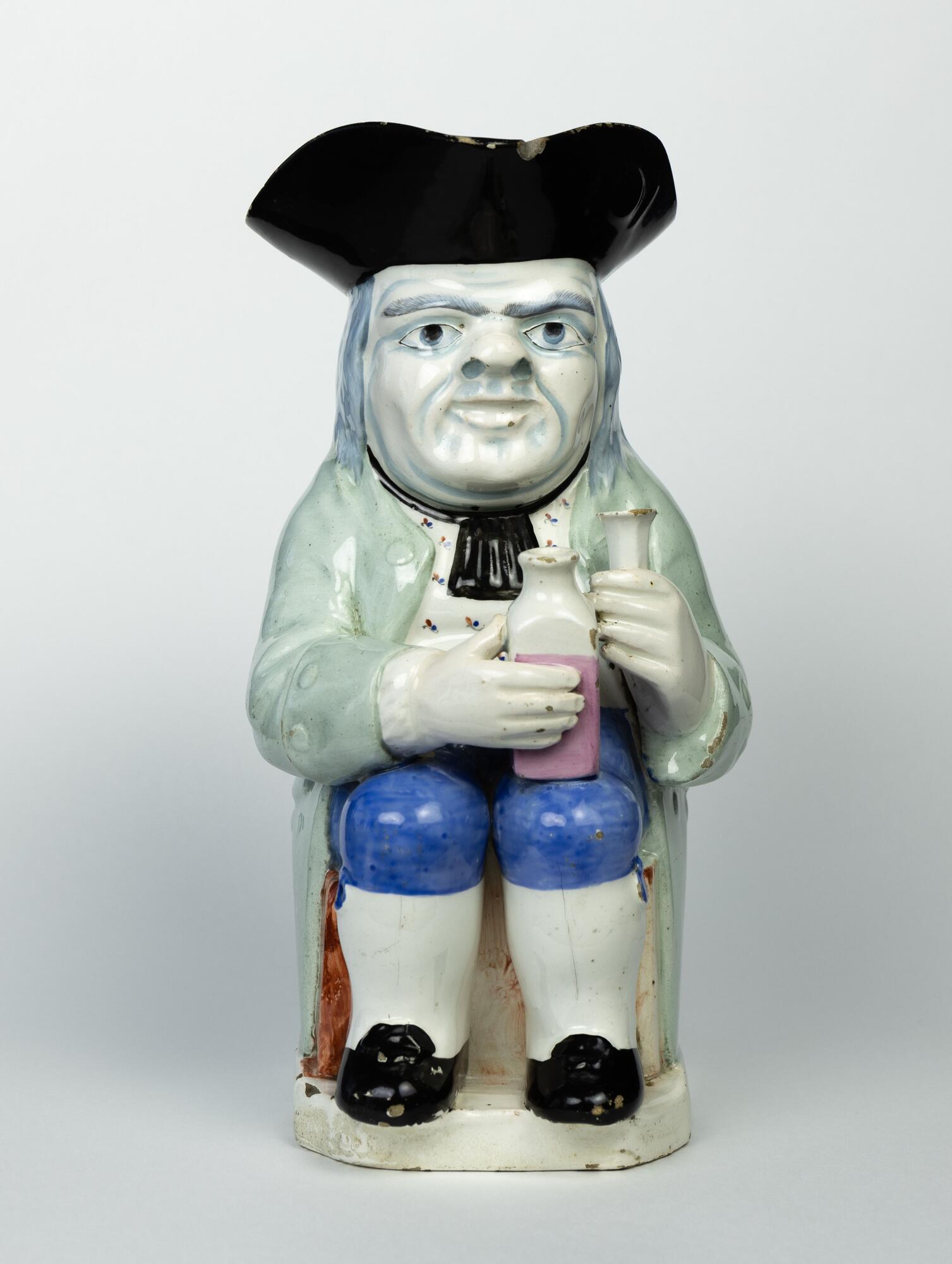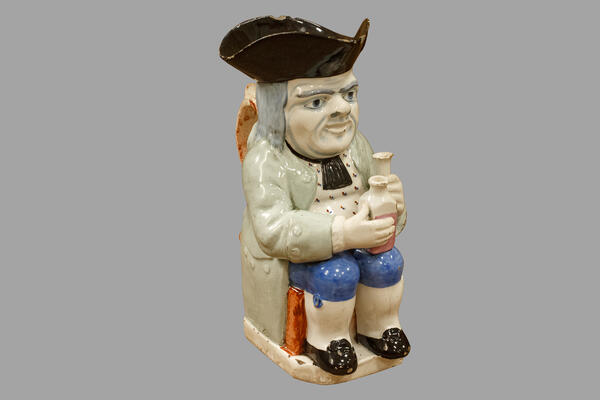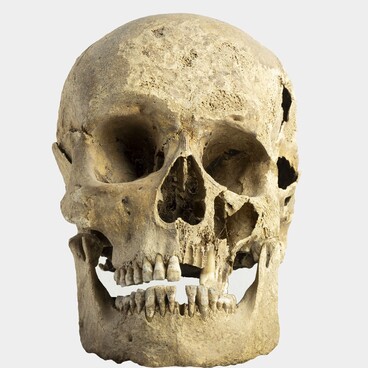The Toby jug is an English ceramic beer mug in the form of a cheerful little man. These vessels glorified the traditional English breakfast, which for ordinary Britons consisted of a piece of cold meat, bread and a mug of ale. The Glazov Museum of Local Lore presents a clay beer mug in the form of a chubby man in an 18th century attire.
There is no factory stamp on this Toby mug, so it is not easy to determine the country of origin. The Russian Toby jugs can always be distinguished from the English ones by technique and décor, as well as by their faces. The Russian jugs have unique facial features, and each character was designed by ceramists of Russian factories. The Glazov Toby looks a lot like an Englishman, but non-standard colors and décor suggest that this jug was made in another country, for example, in Holland or Portugal. The bottle and glass in Toby’s hands, which are traditional for the south of Europe, speak in favor of the Portuguese origin of this mug.
The Glazov Toby jug was made in the late 19th century and donated to the museum in 1978. The English Toby jugs in the form of human figures were invented by potters of Staffordshire, a major English center for the production of ceramics in the 1760s–1780s. Most often, the beer mugs were faience. They were made in the majolica technique.
The name of Toby beer jugs is associated with various legends: according to one, it was connected with Sir Toby Belch from William Shakespeare’s “Twelfth Night”; according to another version, it was the drunkard Toby Philpot from a folk English drinking song who gave name to this mug. Early Toby jugs depicted ordinary Britons — colorful sailors and esquires, pipe smokers, guards, merchants or pastors. The Toby mugs quickly became popular with frequent pub-goers, they were often displayed in the window of a tavern or hotel to entice passers-by to drink some ale.
In the middle of the 19th century, the Toby mugs became souvenirs. People gave them to each other and decorated their houses with them if silver and crystal dishes were unavailable. The Toby became known outside of England and appeared in France, Germany, Holland, Australia, America and Russia.
There is no factory stamp on this Toby mug, so it is not easy to determine the country of origin. The Russian Toby jugs can always be distinguished from the English ones by technique and décor, as well as by their faces. The Russian jugs have unique facial features, and each character was designed by ceramists of Russian factories. The Glazov Toby looks a lot like an Englishman, but non-standard colors and décor suggest that this jug was made in another country, for example, in Holland or Portugal. The bottle and glass in Toby’s hands, which are traditional for the south of Europe, speak in favor of the Portuguese origin of this mug.
The Glazov Toby jug was made in the late 19th century and donated to the museum in 1978. The English Toby jugs in the form of human figures were invented by potters of Staffordshire, a major English center for the production of ceramics in the 1760s–1780s. Most often, the beer mugs were faience. They were made in the majolica technique.
The name of Toby beer jugs is associated with various legends: according to one, it was connected with Sir Toby Belch from William Shakespeare’s “Twelfth Night”; according to another version, it was the drunkard Toby Philpot from a folk English drinking song who gave name to this mug. Early Toby jugs depicted ordinary Britons — colorful sailors and esquires, pipe smokers, guards, merchants or pastors. The Toby mugs quickly became popular with frequent pub-goers, they were often displayed in the window of a tavern or hotel to entice passers-by to drink some ale.
In the middle of the 19th century, the Toby mugs became souvenirs. People gave them to each other and decorated their houses with them if silver and crystal dishes were unavailable. The Toby became known outside of England and appeared in France, Germany, Holland, Australia, America and Russia.






